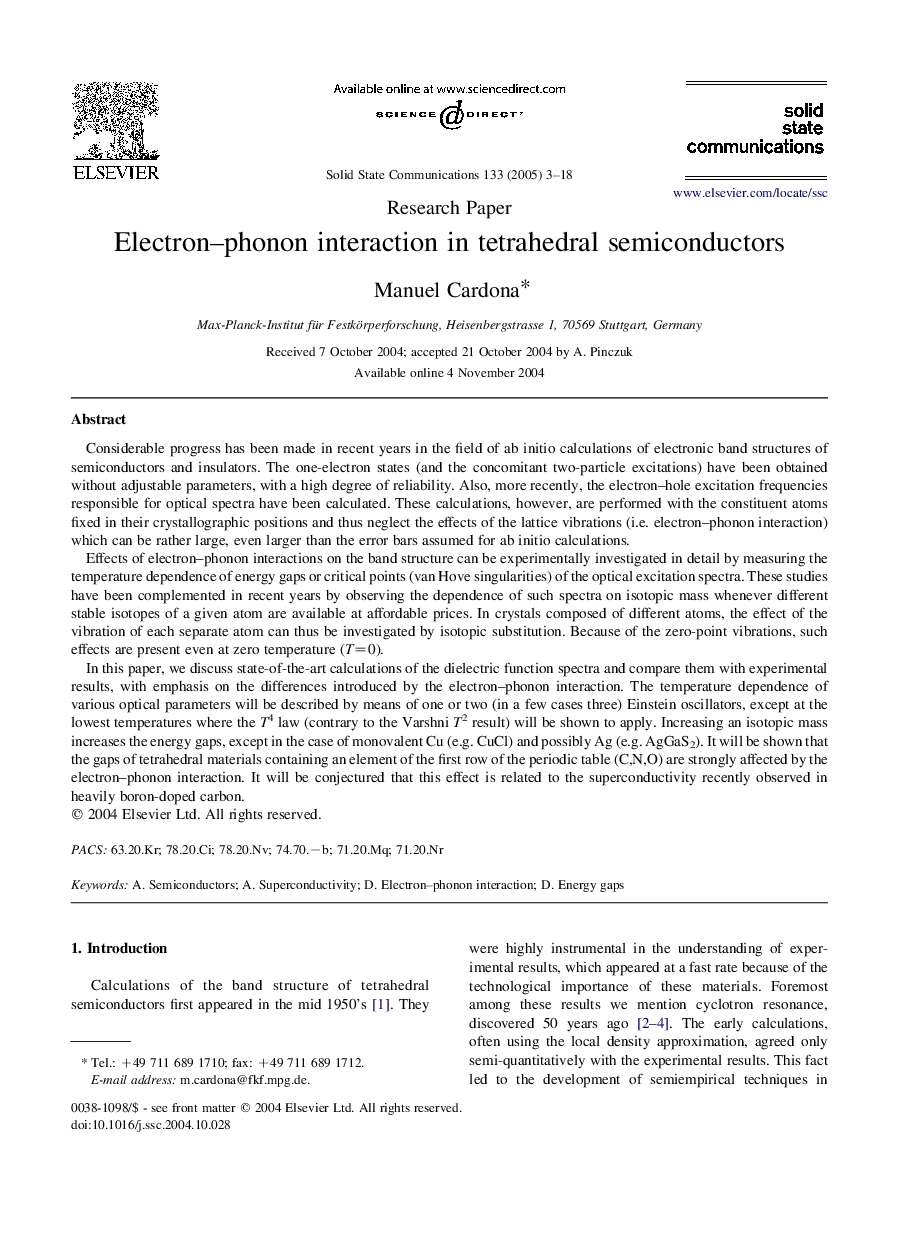| Article ID | Journal | Published Year | Pages | File Type |
|---|---|---|---|---|
| 10653368 | Solid State Communications | 2005 | 16 Pages |
Abstract
In this paper, we discuss state-of-the-art calculations of the dielectric function spectra and compare them with experimental results, with emphasis on the differences introduced by the electron-phonon interaction. The temperature dependence of various optical parameters will be described by means of one or two (in a few cases three) Einstein oscillators, except at the lowest temperatures where the T4 law (contrary to the Varshni T2 result) will be shown to apply. Increasing an isotopic mass increases the energy gaps, except in the case of monovalent Cu (e.g. CuCl) and possibly Ag (e.g. AgGaS2). It will be shown that the gaps of tetrahedral materials containing an element of the first row of the periodic table (C,N,O) are strongly affected by the electron-phonon interaction. It will be conjectured that this effect is related to the superconductivity recently observed in heavily boron-doped carbon.
Keywords
Related Topics
Physical Sciences and Engineering
Materials Science
Materials Science (General)
Authors
Manuel Cardona,
